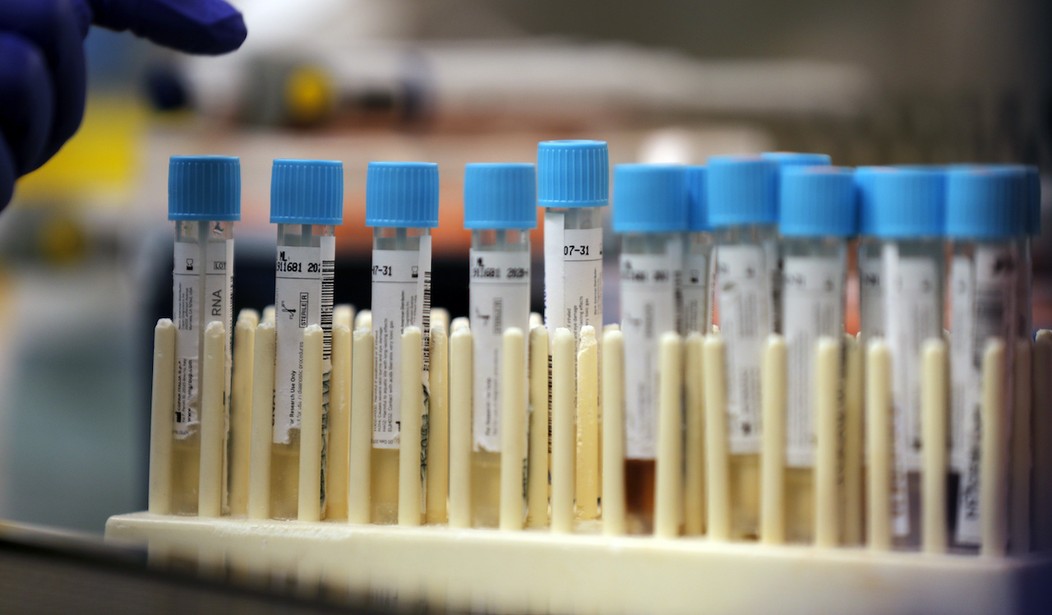As the pandemic panic porn continues because identified cases are rising, Dr. Fauci is back on television, and the media is once again demanding a national response. However, there is news they don’t share with you that could help reduce the already unwarranted levels of fear. Obviously, that doesn’t fit their partisan agenda.
Many commentators have noted that rising case numbers are not necessarily a reason to sound the alarm. The fear with COVID-19 was always of overwhelming the hospital system. The correct numbers to look at are COVID-19 hospitalizations, the percent of positive tests, and the age breakdown for severe disease.
COVID-19 Severity
A doctor from the University of Pittsburgh Medical Center said in a press conference Wednesday that people who are testing positive do not appear to be getting as sick as they did earlier in the pandemic. Dr. Donald Yealy also noted this trend was being seen in the wake of massive protests.
He suggested the country is focusing too much on rising COVID-19 case counts.
“We need to change our mindset and focus not exclusively on the number of cases, but on the severity of illness. We shouldn’t just be counting those who have a diagnosed infection,” Yealy said. “For the vast majority of people testing positive, their illness is mild, or they don’t even know they have any symptoms of COVID-19 infection.”
Dr. Yealy also noted that the positive case rate was about one in 400, which has remained steady for weeks. He also noted improved treatment protocols and some success with Remdisivir and other medications. Effective treatment is in addition to some success protecting the elderly and a much younger patient load testing positive.
“In summary, what our experience shows is that fewer people are being admitted, and when they are, they tend to be much less sick than at the beginning or at the peak phases of the pandemic.”
Hydroxychloroquine
Professor Harvey Risch, M.D., Ph.D., is a researcher at the Yale School of Public Health with a specialty in cancer etiology, prevention and early diagnosis, and epidemiologic methods. He recently surveyed research on the efficacy of hydroxychloroquine, azithromycin, and zinc, concluding that they should be made widely available for use in the pandemic.
In explaining his findings, he noted that COVID-19 causes two different diseases. First is a nasty upper respiratory infection, and then it morphs into viral pneumonia. He only looked at studies where the treatment was given early in the onset and found it was effective. Specifically, he recommended it be given in the first five or six days of symptoms, especially to those over 60 or with a preexisting condition.
As many clinicians using the drug combination have been asserting, it is effective in preventing progression if given early and outpatient. Several have reported that even if a patient has mild shortness of breath, it reduces the severity of the illness.
From the abstract of Dr. Risch’s article in the American Journal of Epidemiology:
Early outpatient illness is very different than later hospitalized florid disease and the treatments differ. Evidence about use of hydroxychloroquine alone, or of hydroxychloroquine+azithromycin in inpatients, is irrelevant concerning efficacy of the pair in early high-risk outpatient disease. Five studies, including two controlled clinical trials, have demonstrated significant major outpatient treatment efficacy.
This article was written on May 27, 2020. When asked why he thought the drug was so controversial, he said:
I think that there has been confusion about treating the cold versus treating the pneumonia. These medications don’t seem to work so well for treating the pneumonia. As early as possible is crucial, within the first five to six days of symptoms.
Seventy-two percent of doctors in Spain are using the drug combination. It would appear in the United States it was less about confusion and more about politics. Fish tank cleaner, anyone?
Asymptomatic Cases
Cases with mild or no symptoms are still the population health researchers are trying to get their arms around. However, recent congressional testimony regarding peer-reviewed research on antibody testing caused the CDC to increase the number of infections to 23 million Americans. It estimated that 8.7 million had likely been infected by March using data for flu-like illnesses. For every one person confirmed, serology for antibodies indicated ten had had it. Establishing this infection rate is a game-changing finding.
Previously Reported Good News
The U.K. reported excellent results with the generic, inexpensive drug dexamethasone. This finding confirms the work done by Dr. Thomas Yadegar at Providence Cedars-Sinai. An overactive immune system response that can be addressed with corticosteroids and other immune suppressants is what is making some patients severely ill. Clinical protocols to treat this syndrome, a cytokine storm, already exist and need to be widely communicated to clinicians.
End the Panic Porn
With a research review that indicates we have a treatment option that can prevent at-risk patients from becoming severely ill and widely available generic drugs that could have saved an estimated 5,000 lives in the U.K., the panic porn should be subsiding. But it is not. It is past time for President Trump to challenge his health experts and demand to know why these avenues are not being pursued.
With waning severity and more effective treatment, the idea of a ‘new normal’ is not required. And there is simply no excuse for this information not to be in the hands of the public.
Editor’s Note: Want to support PJ Media so we can keep telling the truth about China and the virus they unleashed on the world? Join PJ Media VIP and use the promo code WUHAN to get 25% off your VIP membership.










Join the conversation as a VIP Member